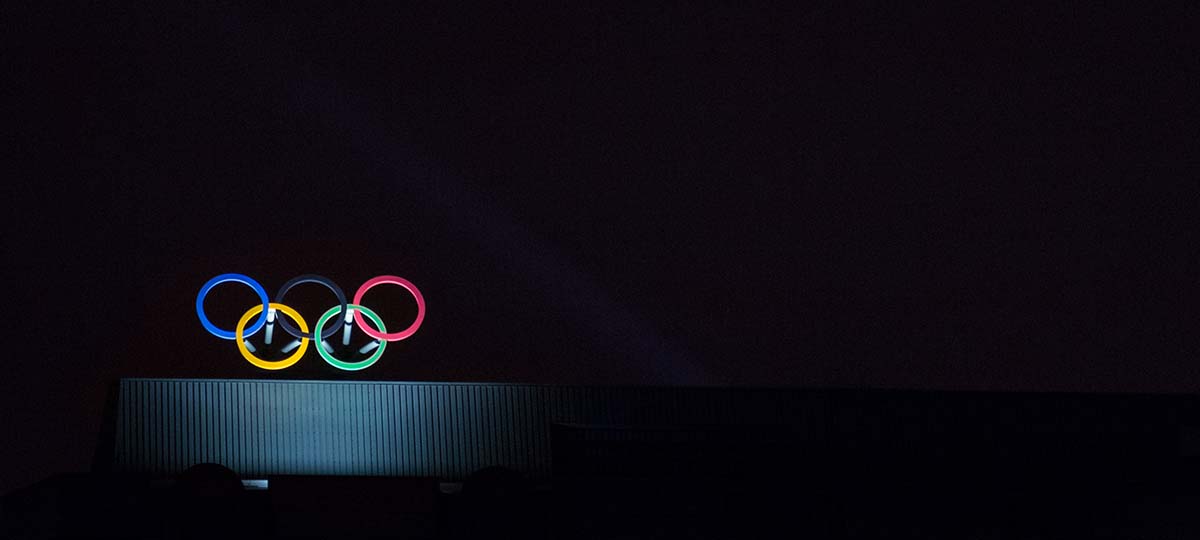Continuing Education
Sports Massage
A comprehensive series of courses to enhance your skills, learn new techniques and deepen your understanding of sports massage.
Olympic athletes share how they have benefited from massage.

There’s an undeniable feeling of pride that comes when you watch an Olympic athlete on the podium. You can’t truly know the work that’s gone into that moment, but you can imagine that behind the athlete are myriad people who helped make their dream a reality: coaches, trainers, parents … and massage therapists.
Abby Wambach, a two-time Olympic gold medalist and FIFA Women’s World Cup champion, has fond memories of the Olympic wins she and her teammates were able to achieve. “It is such an unbelievable honor representing your country and wearing the red, white and blue,” she says. “We obviously had a lot of success at the Olympics, and my favorite moment was sharing the podium with my teammates and hearing the national anthem in front of family and friends.”
Although massage therapy wasn’t always part of her team’s training, later having massage available proved invaluable. “For so many years, we did not have those types of resources available,” she says. “With our national team, it made a huge difference when we did.”
Particularly later in her career, Wambach found massage therapy to be beneficial. “Massage therapy enables you to bounce back so much more quickly after a game and be able to compete at the highest level,” she explains. “Players are always getting bigger, faster and stronger, so it’s critical to maintain your level of fitness and strength throughout your career. Both nutrition and massage therapy are critical pieces of the puzzle.”
This message is one she shares with other athletes, whether they play professionally or not. “Take advantage of massage therapy regularly and make it part of your routine,” she says. “The physical and mental benefits of massage are numerous and it’s something that is not just a luxury, but should be an important part of our lives.”
As an elite gymnast, Strug was no stranger to injury—as was evidenced when she made her now-famous vault to guarantee the women’s U.S. gymnastics team their first gold medal with not one, but two torn ligaments. “I had one injury after another throughout my gymnastics career,” she remembers. “But I always held onto my goals.”
For Strug, massage therapy plays a role in helping her feel better. “As an athlete, especially as a gymnast, something is always hurting,” she says. “I saw a massage therapist once a week to help my body feel better.” According to Strug, she also used massage therapy when recovering from some of her big injuries.
For some, facing so many injuries may have derailed them, but Strug encourages everyone to dig deep, especially when it’s your dream you’re chasing. “Keep following your dreams,” she says. “Those who are persistent and do not give up are those who ultimately succeed.”
Bonnie Blair, an Olympic speedskating champion, will never forget the first time she won a gold medal. It was her second Olympic games. “Doing something for the first time has an unbelievable power and emotion tied to it,” she explains. “Not to say the other wins weren’t thrilling and exciting, but the first one was pretty special.”
As a speedskater, Blair felt fortunate to have very few, if any, serious injuries during her career. “Skating is very smooth and fluid,” she says, “so getting hurt usually would happen away from the ice, during dryland training.”
That’s where massage therapy proved most beneficial for her—during the fall, when training was at its toughest. “Our legs would be like knots,” Blair remembers. “So, to get them ready for the next hard workout was big.”
Blair also used massage therapy when preparing for Olympic competition. “I probably got massages at least three times a week,” she recalls.
When he was 21 years old, David Randall was diagnosed with von Hippel Lindau disease, an inherited disorder that causes benign and malignant in the central nervous system. “I had to have five brain surgeries and four spinal cord surgeries,” he explains. “I had to adjust to life in a wheelchair.”
It was after spinal cord surgery in 2004 that Randall started to handcycle as a way to get back in shape. Just a year after that, a good finishing time in the 2005 Detroit Marathon led Randall to compete on the United States Handcycling Federation’s 2006 circuit. In 2009, after impressing coaches at the Paralympics Talent I.D. camp, he made his first World Championship team. Since 2013, he’s been a member of Team Roger C. Peace, and hopes to participate in the 2016 Summer Paralympics.
For Randall, getting regular massages is a big part of him being able to do just that. “By getting regular massages, I have been able to push my body harder during training and competitions because it helps me recover quicker,” he says. “Massage helps keep my muscles loose and flexible, allowing for maximum performance.”
Dealing with life’s ups and downs has given Randall a perspective that helps him face each day with confidence. “I can say that the road hasn’t always been easy, but my faith and learning to take one day at a time has helped me tremendously,” he says. “I try not to focus on what can happen in the future and be thankful for the present day I have been given to live.”
Randall was a member of the 2015 Paracycling World Championship team and attended the World Championship in 2009, 2010 and 2015. Today, as a member of Team Roger C. Peace, he, in partnership with AMTA and other para-athletes, is participating in gathering data on the impact of massage therapy on the conditioning and performance of these professional athletes.